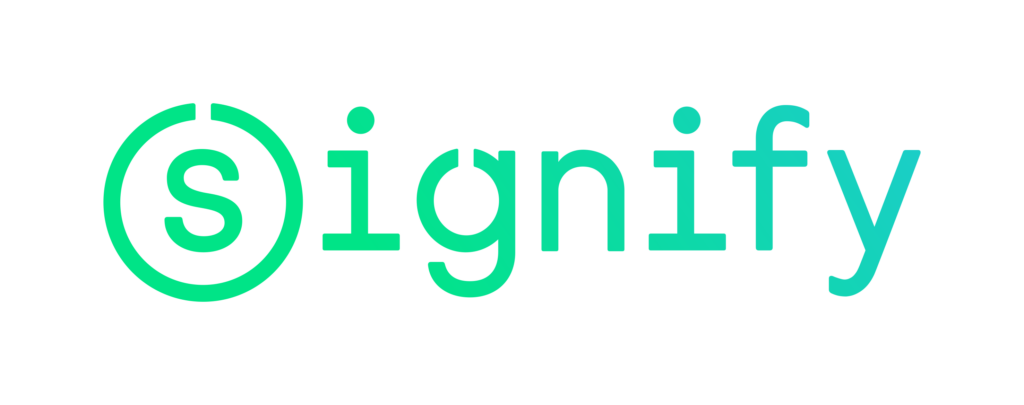Partner trust, employee buy-in, constant flexibility and a challenge-first approach are listed as critical to a successful procurement transformation programme by Arnold Chatelain of Signify. His dashboard still consists of 25 ongoing transformation projects for the year ahead, and they are just the tip of the iceberg of what’s already been achieved over the past five years.
Hello Arnold. Transformation will undoubtedly be the theme of this conversation but that can of course cover a multitude of activities. What was your initial focus and transformation remit when joining Signify?
I joined in 2019 and was charged with the digitisation of procurement, initially focusing on direct procurement, before also turning attention to indirect procurement, freight and distribution, packaging and more. The scope has extended, but the focus on digital transformation has remained the same since arriving in 2019.
I presume Signify acquired your expertise in transformation based on some of their experiences prior to 2019? What were the initial challenges being faced by the company when you arrived?
Yes, I have indeed worked at several technology companies, where I led extensive transformation programmes in professional services, R&D workforce strategy, transformational capability development, and procurement. Signify brought me onboard for my expertise in transformation, leveraging my experience with similar challenges prior to 2019.
When I arrived, the initial challenges included the overall maturity of their digital assets and the urgent need for a comprehensive digital transformation. Although they had a digital system in place for procurement, the system was not evolving and was not interconnected with other systems.
Additionally, some processes were still being managed using Excel, which needed to be modernized. In terms of what was being asked of me at the other side of a transformation, there was a call for greater speed, efficiency, transparency, better user experience and – as always – cost-effectiveness.
Click Below: view the digital brochure version of this content
When embarking on the programme itself, what were the initial steps taken? A transformation can seem quite overwhelming during the planning process as it includes many incremental steps. So, what were those first steps and approaches implemented by you?
We moved quite quickly once the programme began. The first step was to establish a baseline, which involved identifying metrics from which we could – and still can – measure performance. This included carrying out an inventory of our current systems and processes, as well as documenting all the issues we were encountering. This established our baseline, from which we could plan and visualize revisions and improvements over the next two to three years.
As part of this process, we conducted a digital maturity assessment survey to measure our performance against best-in-class companies and identify the gaps. This allowed us to benchmark ourselves both in the present and in terms of where we wanted to be in two or three years.
The second step was to define our performance goals to stay ahead of the competition and become a best-in-class company within that timeframe. The third step involved creating a detailed plan to achieve these goals, focusing on the necessary technological, personnel, and process transformations.
How did you go about prioritising the initial overhaul of systems and processes?
Prioritising the initial overhaul was quite straightforward as the contract with our former direct procurement platform was ending, providing the perfect timing for a change. In indirect procurement, we decided to outsource, and the chosen partner, GEP, brought their own platform.
The COVID-19 pandemic also played a role in our prioritization, as the need to work remotely highlighted the necessity for better digital systems. This urgency helped drive our initial decisions.
Since then, each digitization initiative has been prioritised based on a business case analysis. We assessed the complexity and return on investment for each initiative, then prioritised the steps that were most needed and could deliver quicker value.
Content Sponsor and Transformation Partner: GEP

When transforming each area, how did you decide which digital tools would be most suitable?
It was essential not to start by thinking about the solution. Many companies jump straight into selecting a tool or platform, but we took a different approach. We believe that the journey to value is quicker if you first slow down, analyse the problem, identify the root cause, and then begin the transformation process from there.
A tool alone won’t solve your problem if you don’t understand why you need it, what it will do, what the returns on your investment will be, and – crucially – how to use it. By starting with the problem, you can identify countermeasures specific to your business requirements. From there, you can find a tool that effectively addresses that exact challenge. The choice of a tool and a platform cannot be separated from the people using it and the process.

We presented the problem to vendors to leverage their experience with existing customers, which opened up communication and fostered a partnership. This approach allowed us to utilise their standard solutions, pushing us towards process simplification. In cases where no standard solution existed, it triggered the development of new ones. This process helped us value flexibility among vendors who understand our challenges, propose tailored solutions, and work with us to meet our specific needs, while also pushing back when a standard solution could meet our requirements with minor process adjustments. All of this would be missed if we went straight to the solution first.
And, as you say, with this approach, the transformation itself goes much faster?
Exactly. In some cases, we moved extremely quickly. For direct procurement with JAGGAER, we finalised the first tender for the initial model in March and had five modules implemented by August. This speed is achievable when you find a vendor whose standard solution fits your needs well due to thorough research. While small adjustments might be necessary, trusting the standard solution without extensive customisation makes integrations much faster.
On the indirect procurement side, with GEP, the process was also swift. By outsourcing to them, we benefited from their knowledgeable team who could effectively leverage their platform, allowing us to focus our digital transformation efforts on direct procurement. They significantly helped us achieve the first stage in our transformation journey.
Could you please go into a bit more detail about the role of GEP?
Yes, after completing the first stage of our transformation journey, we decided to bring part of the indirect procurement process back in-house and enhance their platform.
This transformation and shift in our relationship allowed us to standardise elements, integrate them with our broader infrastructure, and better utilise the data generated by the platform, thereby improving our performance. The success of this programme has elevated our indirect procurement function and underscores the importance of partner flexibility.
Indirect procurement is often left out of the thought leadership conversation when discussing procurement transformations. Why do you think that is?
I’m not sure because indirect procurement is extremely important. At Signify, we place a strong focus on this area at all levels of the organisation. It represents a significant portion of company spending and involves everyone. This can range from purchasing new computers or broader IT expenditures to stationery, business travel, consultancy services, and office requirements.
Compared to direct procurement, indirect procurement involves a much larger volume of small suppliers and a broader user base that isn’t necessarily specialised in procurement activities. Therefore, having a platform that can address the diverse sourcing needs of these items and is easy for the entire organisation to use, is both challenging and crucial.
You mentioned the impact of transformation on your people there. In general, what has been the reaction to your approach at Signify since 2019? As you mentioned, many of them were using legacy technologies or even Excel before your arrival, so are people seeing these changes as positive, or as a challenging overhaul?
It is a very interesting topic because you have different types of people in an organisation – some are more tech-savvy than others and will adopt a new tool immediately and be enthusiastic about it, but others will have been working the same way for as long as 20 years and don’t always, immediately, see the value of change. It can be overwhelming.
How do you overcome this issue for that latter group?
Actually, we use the same approach for everyone, and that’s important. But we focus on two key aspects.
First, we need to make the baselining approach visible to everyone so they can see where we, as a company, are falling behind competitors or need to improve. We demonstrate a clear path for achieving market-leading performance and emphasise that we can’t afford to lag behind, creating a sense of urgency. We communicate that their involvement is crucial for moving from our current state to our desired future state. We need them to embrace the transformation, learn, and use the tools. This is a top-down approach that requires buy-in from leadership.
Secondly, there needs to be accountability. For each initiative, we implement an adoption KPI to measure how extensively people are using the tool. This isn’t intended to punish anyone but to identify which group is struggling to adapt. We listen to their struggles to provide dedicated support or training, ensuring they understand the importance of the change. In some cases, lack of adoption might indicate a genuine technological or process issue, prompting us to adjust our process or the tool itself.

Can I presume, therefore, that the second step is more of a bottom-up approach?
Absolutely. It’s crucial to make it clear why we are doing this for them. Additionally, this involves training and upskilling, so they become actively involved in developing the solution itself.
For our sourcing platform, users have played a significant role in understanding its benefits and providing feedback. A tool should never remain static. It should always be optimised and regularly enhanced with the help of our partners. We gather feedback through workshops, structured internal continuous improvement systems, and bi-weekly meetings to identify viable ways to improve the platform based on input from internal users and suppliers. The bottom-up approach is just as important as the top-down approach to ensure effective change management.
And, over time, it’s not just the technology that’s changing, but the culture and the attitude towards change more generally?
Exactly. And now, they are even involved in the identification process when researching new tools. We can bring them into testing so, when we finally integrate a solution, we know it’s as suitable and valuable as it can be, right from the start.
Almost five years on from your arrival at Signify, how would you analyse the success of your transformation so far? What milestones along the way really epitomise the progress you’ve made?
In terms of the procurement function’s performance, we have consistently exceeded the majority of our challenging annual targets. We’ve seen reductions in lead times across almost all processes, including the onboarding and integration of new platforms. Referring back to the baselines established at the start, this process is continuous, and the baselines keep improving.
From an innovation perspective, our relationship with GEP has been very significant, particularly in bringing indirect procurement back in-house with their ongoing assistance. Additionally, our investments in platforms like Viima, which collects and structures improvement ideas from our suppliers, and Apriori, which automates should-cost analysis for certain commodities, have been crucial. The Collabswith platform, used to sell our obsolete inventory, has also provided a competitive advantage. These tools were especially useful during COVID for streamlining and maturing product ideas and moving away from an Excel-centric culture.
By co-developing and innovating alongside these trusted suppliers, we have quickly met our stringent targets while also improving adoption rates within the company. The culture has transformed significantly. Now, if a piece of information is outside our new platforms, it’s considered non-existent, and people are coming regularly with new digitalisation ideas. People have realised the importance of aligning with new tools to ensure their work is relevant and meaningful.
If we were to speak again next year then, what is the next phase of the transformation?
Well, it’s not just one stage. I currently have a dashboard in front of me with all the individual initiatives we need to work on (and have already started). There are 25 in total.
It’s a lot, but we have to be ambitious and agile. This includes further digitising our freight, distribution and packaging functions, as well as introducing more automation to better connect our platforms for smoother data flows. We’re also pushing the use of generative AI, especially in supplier scouting, contracting, purchase requisition, sourcing and purchase order confirmation.
When working on so many different initiatives, we continue to collaborate with key partners such as JAGGAER for direct procurement and GEP for indirect procurement, as they have a deep understanding of our requirements and objectives. However, we remain flexible and sometimes need new providers for specific business cases, with sustainability being a primary focus for the coming year.
More generally, after the past five years, what would your message be to other organisations considering or needing a similar scale of transformation?
I’ve mentioned it before, but the term ‘flexibility’ really is important. We spent a lot of time identifying baselines and benchmarks to have the best ‘plan A’ possible, but we still need to be adaptable enough should market situations or our requirements change.
That has definitely been one of our key strengths, reacting to what is happening around us as well as what is happening within Signify, and to then develop and integrate a suitable solution at short notice.
You might call it flexibility, but you could also call it resiliency. It comes from having an innovative mindset that is shared with our trusted suppliers and partners. All of these capabilities and resources have been key to our transformation so far, and actually get stronger with each passing year.


